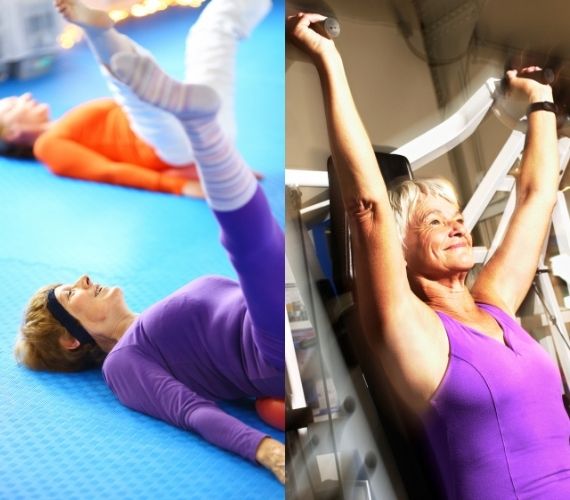
Abstract
Background: The neuromuscular decline impact in the functional independence of older women is determining the necessity of implementing new strategies focused on core strength training and postural stability maintenance to promote healthy aging.
Objectives: To define whether Pilates or resistance training is better at improving (a) core isometric and isokinetic muscular strength, and (b) static and dynamic balance, in older women.
Methods: This was a cluster randomized controlled trial. Physically independent older women (60-80 years) from day centers were randomly allocated to Pilates, Muscular and Control Groups (PG, MG and CG) using a block randomization method. Only the research staff performing the assessment and statistical analysis were blinded. Exercise groups trained twice a week (1 h per session) for 18 weeks in a moderate-to-vigorous intensity. Core strength (primary outcome): trunk and hip isometric and hip isokinetic muscular strength (Biodex System III Pro Isokinetic Dynamometer), alongside one leg static balance (portable force platform Kistler 9286AA) and dynamic balance (timed up and go (TUG)) were assessed.
Results: A total of 60 participants were randomized (PG, n = 20; MG, n = 20; CG, n = 20) and 49 completed the trial (PG, n = 16; MG, n = 19; CG, n = 14). Regarding hip isometric extension strength, PG was statistically better than CG (P = 0.004). There were no differences between groups regarding isokinetic strength or balance. Intra-group comparisons showed significant improvements (P < 0.05) in the dynamic balance and trunk and hip isometric extension strength for PG and MG, whereas every hip isokinetic measurement was improved in MG. Exercise programs did not produce any adverse event.
Conclusions: The Pilates training program was more effective for improving isometric hip and trunk extension strength, while the Muscular training program generated greater benefits on trunk and hip isokinetic strength. Moreover, both training programs showed moderate effects for the TUG.

Comments are closed.